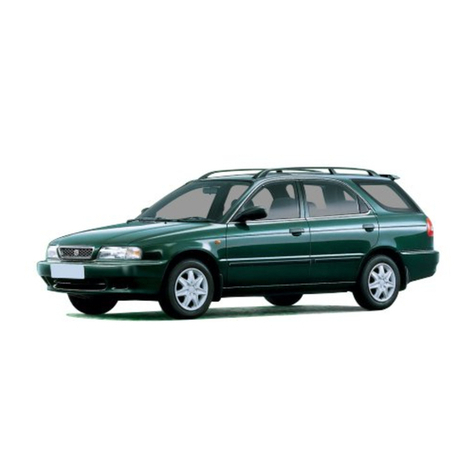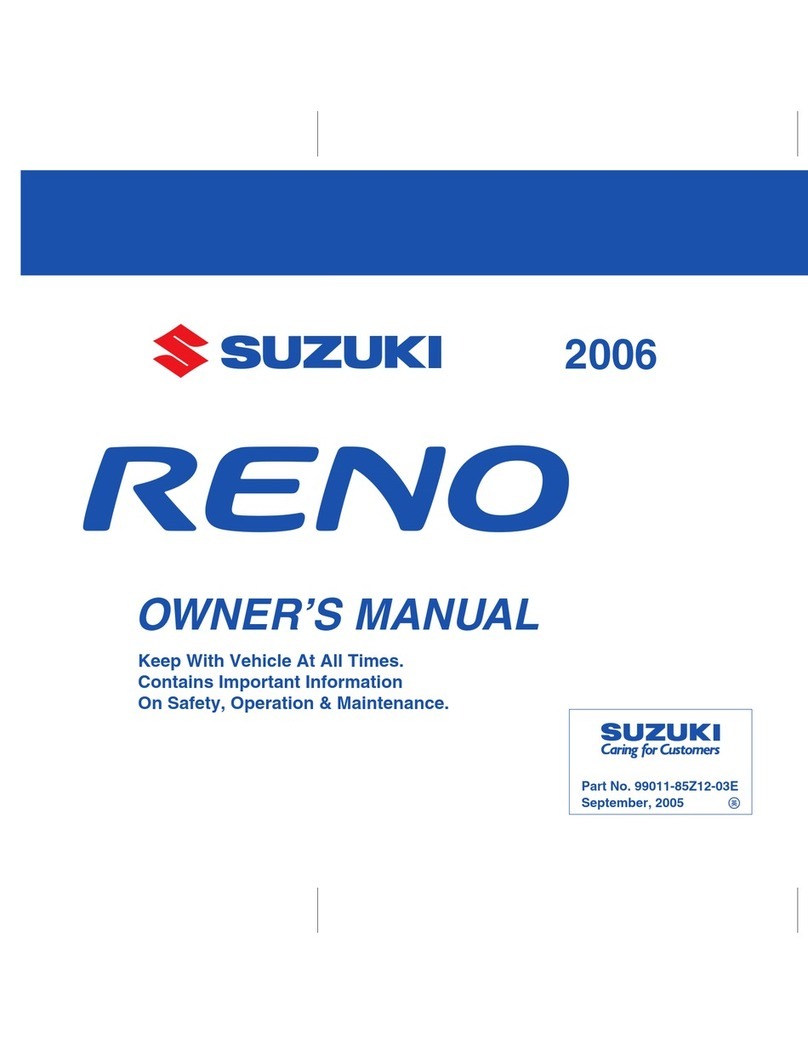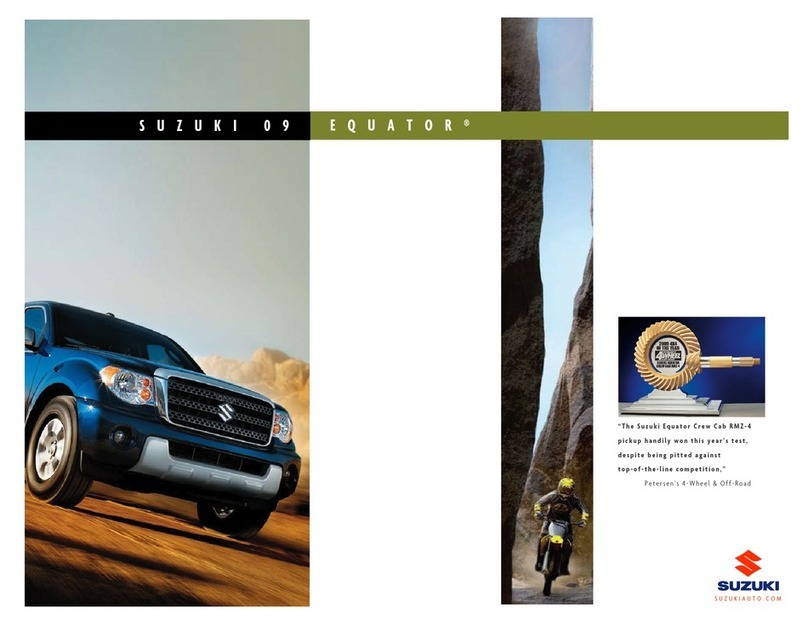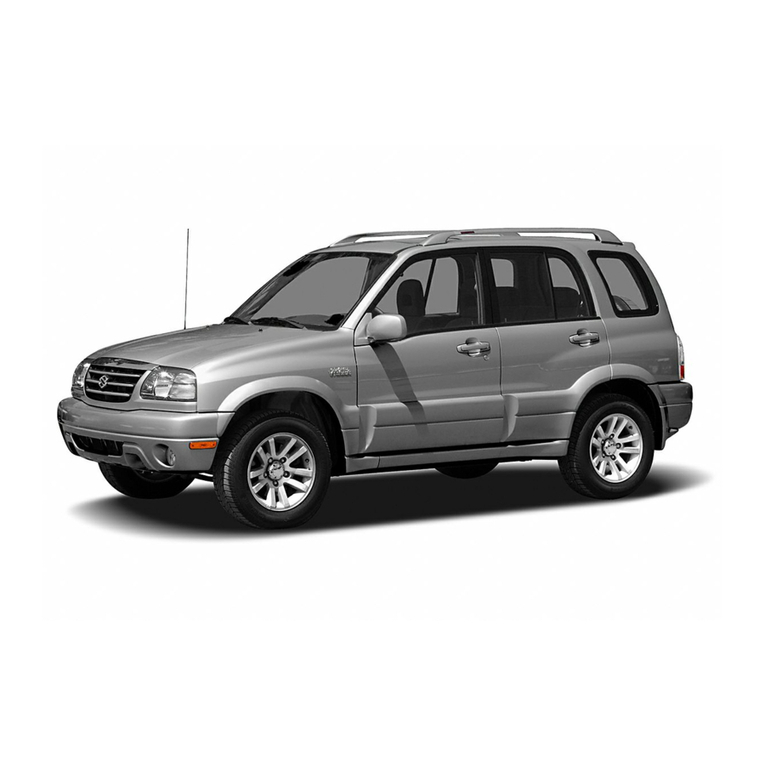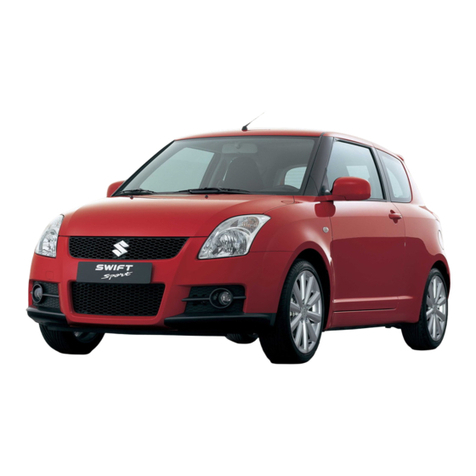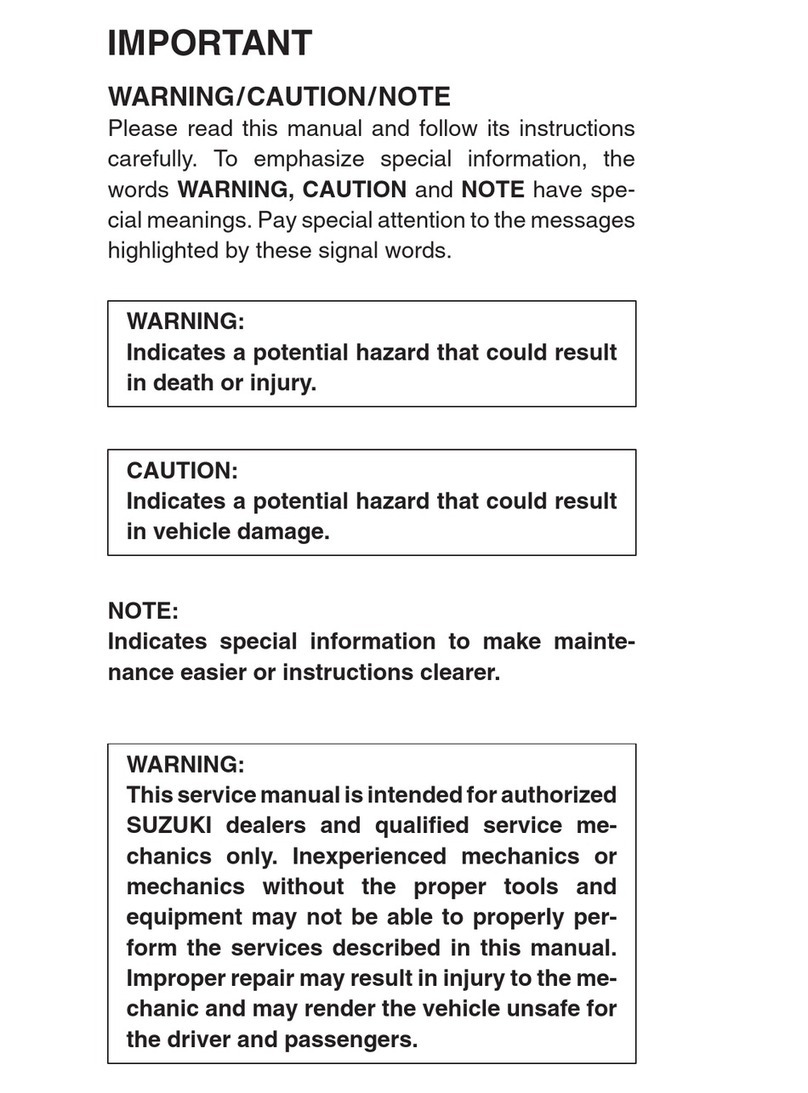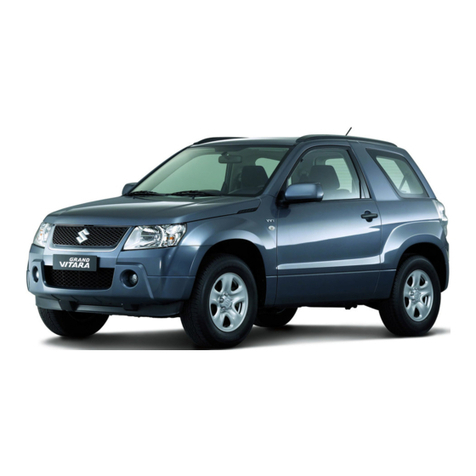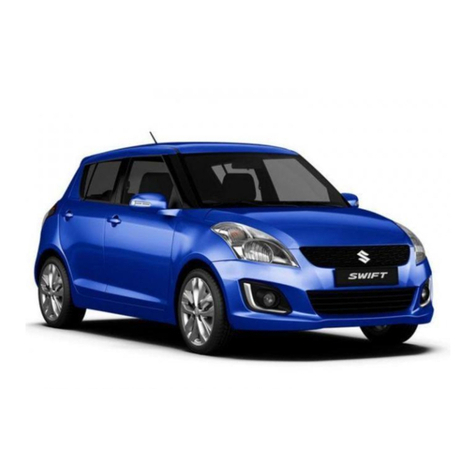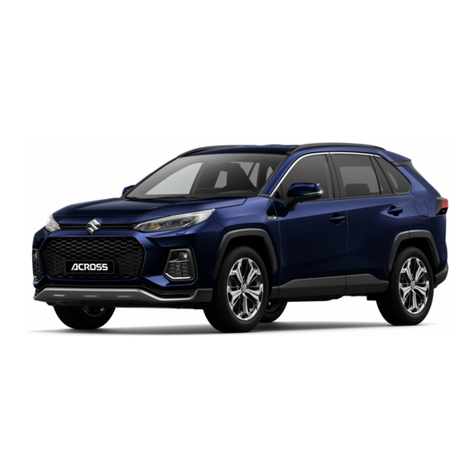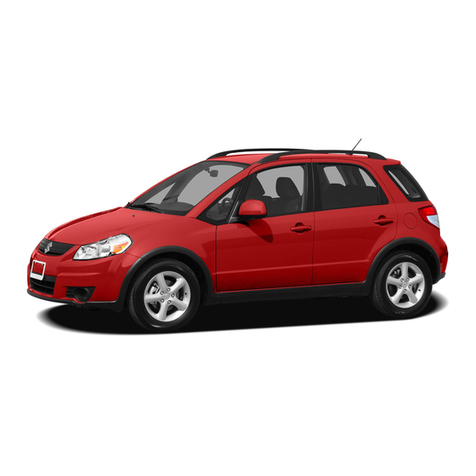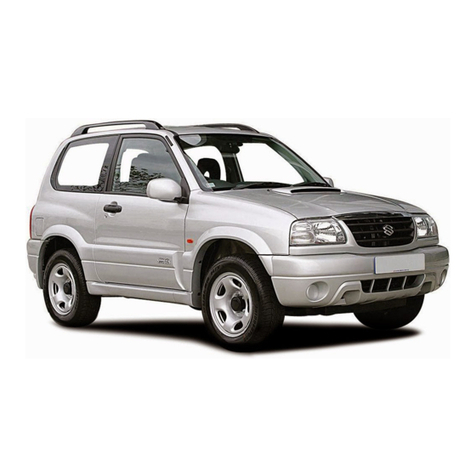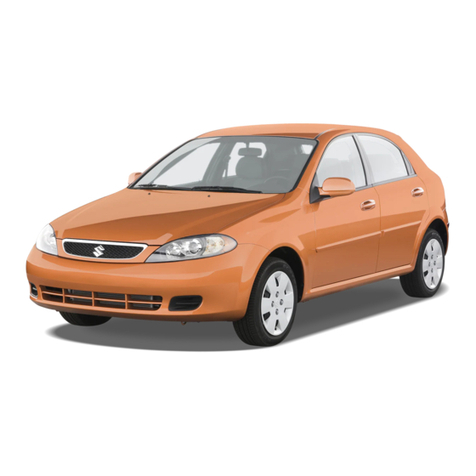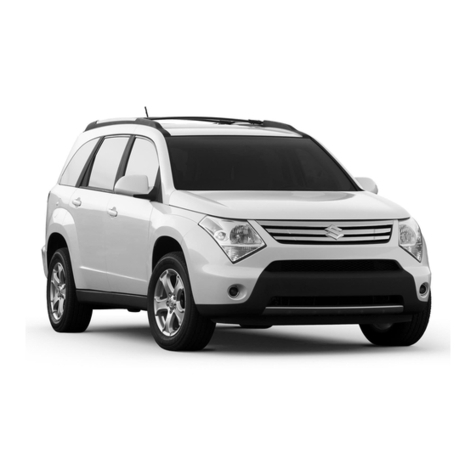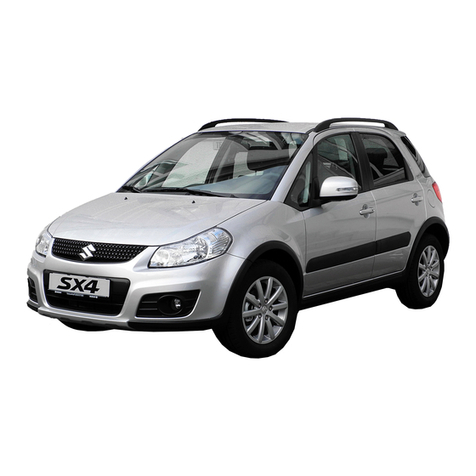
IMPORTANT
WARNING/CAUTION/NOTE
Please read this manual and follow its instructions
carefully. To emphasize special information, the words
WARNING, CAUTION and NOTE have special mean-
ings. Pay special attention to the messages high-
lighted by these signal words.
WARNING:
Indicates a potential hazard that could result
in death or injury.
CAUTION:
Indicates a potential hazard that could result
in vehicle damage.
NOTE:
Indicates special information to make mainte-
nance easier or instructions clearer.
WARNING:
This service manual is intended for autho-
rized SUZUKI dealers and qualified service
mechanics only. Inexperienced mechanics
or mechanics without the proper tools and
equipment may not be able to properly per-
form the services described in this manual.
Improper repair may result in injury to the
mechanic and may render the vehicle un-
safe for the driver and passengers.
WARNING:
For vehicles equipped with Supplemental
Restraint (Air Bag) System:
!Service on or around the air bag system
components must be performed only by
an authorized SUZUKI dealer. Please ob-
serve all WARNINGS, CAUTIONS and
“Service Precautions” under “On-Vehicle
Service” in SECTION 10B before perform-
ing service on or around the air bag sys-
tem components or wiring. Failure to
follow WARNINGS could result in uninten-
tional activation of the system or could
render the system inoperative. Either of
these two conditions may result in severe
injury.
!If the air bag system and another vehicle
system both need repair, SUZUKI recom-
mends that the air bag system be repaired
first, to help avoid unintentional activa-
tion of the air bag system.
!Do not modify the steering wheel, instru-
ment panel or any other air bag system
component. Modifications can adversely
affect air bag system performance and
lead to injury.
!If the vehicle will be exposed to tempera-
tures over 93!C (200!F) (for example, dur-
ing a paint baking process), remove the
air bag system components (air bag (infla-
tor) modules, SDM and seat belt preten-
sioner (if equipped)) beforehand to avoid
component damage or unintended activa-
tion of the system.
